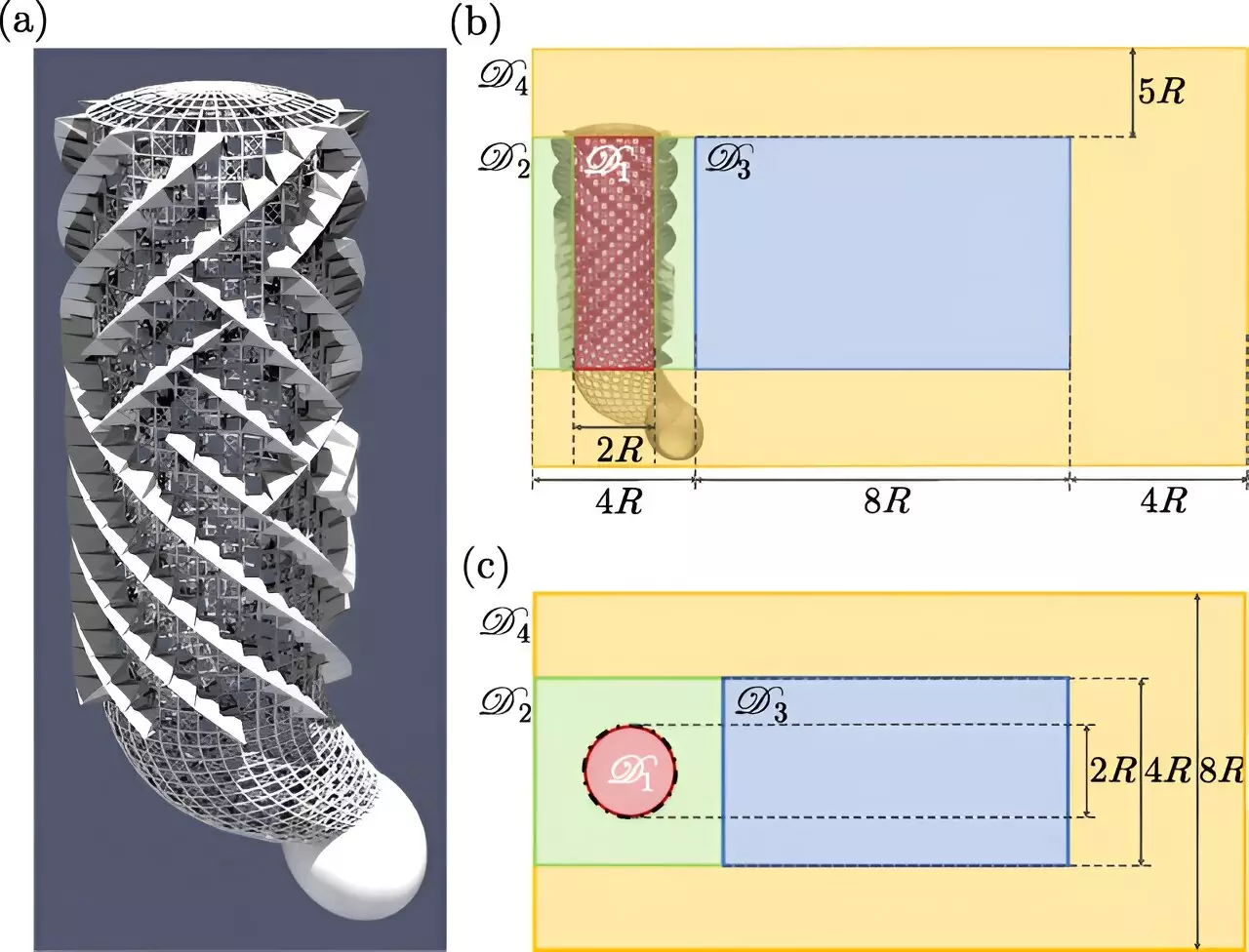The Venus flower basket sponge has long been a topic of interest for researchers due to its delicate glass-like lattice outer skeleton and its ability to thrive in the harsh conditions of the deep sea. Recent research has uncovered a new aspect of this creature’s structure – its natural ability to filter feed using only the ambient currents of the ocean depths, without the need for pumping. This discovery by an international research team, led by the University of Rome Tor Vergata and NYU Tandon School of Engineering, has the potential to revolutionize the way engineers design various systems.
The study, published in Physical Review Letters, highlights how the skeletal structure of the Venus flower basket sponge diverts slow deep sea currents upwards into its central body cavity, allowing it to feed on plankton and marine detritus. This process is achieved through the sponge’s spiral, ridged outer surface that acts like a spiral staircase, passively drawing water upwards through its lattice-like frame. The research settles a long-standing debate about the sponge’s feeding mechanism, proving that it can draw in nutrients without active pumping.
At higher flow speeds, the lattice structure of the sponge reduces drag on the organism, showcasing its adaptability to different environments. However, it is in the near-stillness of the deep sea where the sponge’s natural ventilation system is most impressive. The study reveals that the sponge’s ability to passively feed works effectively at very slow current speeds, around centimeters per second. This demonstrates the sponge’s elegant solution for maximizing nutrient supply through passive mechanisms, making it a remarkable filter feeder.
Researchers utilized the powerful Leonardo supercomputer at CINECA to create a highly realistic 3D replica of the sponge, allowing for detailed simulations of water flow around and inside the sponge’s skeleton. By conducting experiments on the digital twin of the sponge, the team uncovered valuable biomimetic engineering insights that could enhance the design of various systems. The simulations provided a deeper understanding of flow patterns and drag reduction, which could be applied to optimize chemical reactors, air purification systems, and aerodynamic surfaces.
The asymmetric, helical ridges of the Venus flower basket sponge could serve as inspiration for designing low-drag hulls, fuselages, and structures to promote efficient interior airflow. The insights gained from studying the sponge’s fluid dynamic performance could have far-reaching implications for engineering applications. By mimicking nature’s elegant solutions, engineers could revolutionize the design of systems that require efficient fluid flow control, ultimately leading to more sustainable and effective technologies in various industries.
Through a thorough analysis of the research findings on the Venus flower basket sponge, it is evident that nature has once again provided valuable lessons for engineering innovation. The unique abilities of this ancient organism to passively feed and adapt to its environment showcase the incredible feats of natural engineering. By harnessing these principles, engineers have the opportunity to create more efficient and sustainable solutions for a wide range of applications.


Leave a Reply